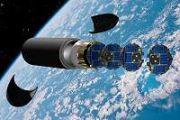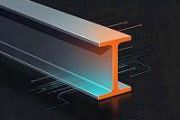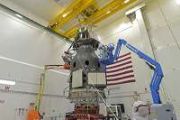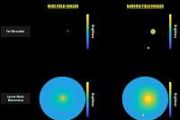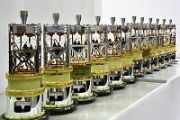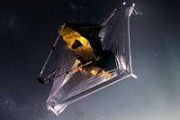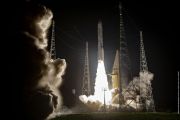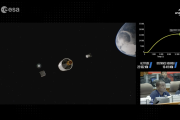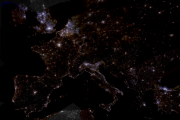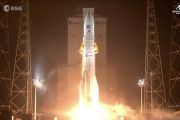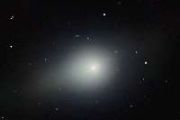
Copernical Team
Ethical and legal clarity urged as planetary defense faces asteroid threats
 A potentially catastrophic asteroid impact may seem like science fiction, yet the possibility remains real. Earlier this year, asteroid 2024 YR4 briefly raised alarms with a 1-2 percent chance of colliding with Earth in 2032. Although updated calculations have ruled out a threat in this instance, future threats remain a pressing concern.
A new research paper from Swinburne University of Te
A potentially catastrophic asteroid impact may seem like science fiction, yet the possibility remains real. Earlier this year, asteroid 2024 YR4 briefly raised alarms with a 1-2 percent chance of colliding with Earth in 2032. Although updated calculations have ruled out a threat in this instance, future threats remain a pressing concern.
A new research paper from Swinburne University of Te Rocket Lab books two responsive Electron missions for 2025 including launch this week
 Rocket Lab has confirmed it will launch two dedicated Electron missions in 2025 for an undisclosed commercial client, with the first liftoff scheduled for as early as June 20. This rapid turnaround highlights the company's growing reputation for fast, tailored access to space.
The inaugural flight, named "Symphony In The Stars," will lift off from Launch Complex 1 in New Zealand, placing a
Rocket Lab has confirmed it will launch two dedicated Electron missions in 2025 for an undisclosed commercial client, with the first liftoff scheduled for as early as June 20. This rapid turnaround highlights the company's growing reputation for fast, tailored access to space.
The inaugural flight, named "Symphony In The Stars," will lift off from Launch Complex 1 in New Zealand, placing a UP Aerospace debuts Spyder rocket with successful hypersonic test launch
 UP Aerospace has completed the inaugural launch of its Spyder hypersonic rocket, marking a major advancement in rapid-response flight capabilities. The launch occurred at 7:00 AM MST from Launch Complex 36 and achieved hypersonic velocities similar to those of the long-operating SpaceLoft missions.
The test was supported by the Navy White Sands Detachment and funded by the Stockpile Respon
UP Aerospace has completed the inaugural launch of its Spyder hypersonic rocket, marking a major advancement in rapid-response flight capabilities. The launch occurred at 7:00 AM MST from Launch Complex 36 and achieved hypersonic velocities similar to those of the long-operating SpaceLoft missions.
The test was supported by the Navy White Sands Detachment and funded by the Stockpile Respon Detection of ancient water ice suggests interstellar origins predating the Sun
 A team of astronomers from Leiden University and the National Radio Astronomy Observatory has confirmed the first robust detection of semi-heavy water ice surrounding a young sunlike star, strengthening the hypothesis that some of the solar system's water predates the Sun itself. Their study, based on observations from the James Webb Space Telescope, was published in The Astrophysical Journal Le
A team of astronomers from Leiden University and the National Radio Astronomy Observatory has confirmed the first robust detection of semi-heavy water ice surrounding a young sunlike star, strengthening the hypothesis that some of the solar system's water predates the Sun itself. Their study, based on observations from the James Webb Space Telescope, was published in The Astrophysical Journal Le Proba-3 reveals breakthrough images of the solar corona from space
 Proba-3, the European Space Agency's dual-satellite mission, has achieved a historic milestone by capturing its first images of the Sun's outer atmosphere during an artificial solar eclipse in orbit. Using advanced formation flying, the mission's two spacecraft aligned with millimeter-level precision to simulate a total eclipse, enabling high-resolution observations of the elusive solar corona.
Proba-3, the European Space Agency's dual-satellite mission, has achieved a historic milestone by capturing its first images of the Sun's outer atmosphere during an artificial solar eclipse in orbit. Using advanced formation flying, the mission's two spacecraft aligned with millimeter-level precision to simulate a total eclipse, enabling high-resolution observations of the elusive solar corona. Image: Hubble studies a spiral's supernova scene
This request seems a bit unusual, so we need to confirm that you're human. Please press and hold the button until it turns completely green. Thank you for your cooperation!
Press and hold the button
If you believe this is an error, please contact our support team.
185.132.36.159 : 4e46c890-4d72-4e5e-9624-1adff053
How bubble muscles could help astronauts get their space legs
This request seems a bit unusual, so we need to confirm that you're human. Please press and hold the button until it turns completely green. Thank you for your cooperation!
Press and hold the button
If you believe this is an error, please contact our support team.
185.132.36.159 : b72f473f-48c0-45ce-80f2-004a0c36
ESA teams up with Leonardo against satnav jamming
Press Release N° 36–2025
Uninterrupted access to satellite navigation is essential in our modern world, but it is threatened daily by external interference, such as jamming and spoofing. New technologies and concepts can help increase the resilience of our satellite navigation solutions. ESA and Leonardo are embarking on a joint project to explore smart antennas powered by Machine Learning to block unwanted signals.
ESA at Le Bourget 2025 - Day One Highlights

The European Space Agency has begun the 55th International Paris Air Show by unveiling the first images from the Proba-3 spacecraft.
First artificial solar eclipse in space
 Video:
00:01:40
Video:
00:01:40
Proba-3 artificially created what is normally a rare natural phenomenon: a total solar eclipse.
In a world first, ESA’s Proba-3 satellites flew in perfect formation, blocking the Sun’s bright disc to reveal its fiery corona. This enigmatic outer layer burns millions of degrees hotter than the Sun’s surface and drives the solar storms that can disrupt life on Earth.
With its first artificial eclipse, Proba-3 has captured detailed images of this mysterious region, offering scientists new insights into our star’s behaviour.
Read the full story here.


